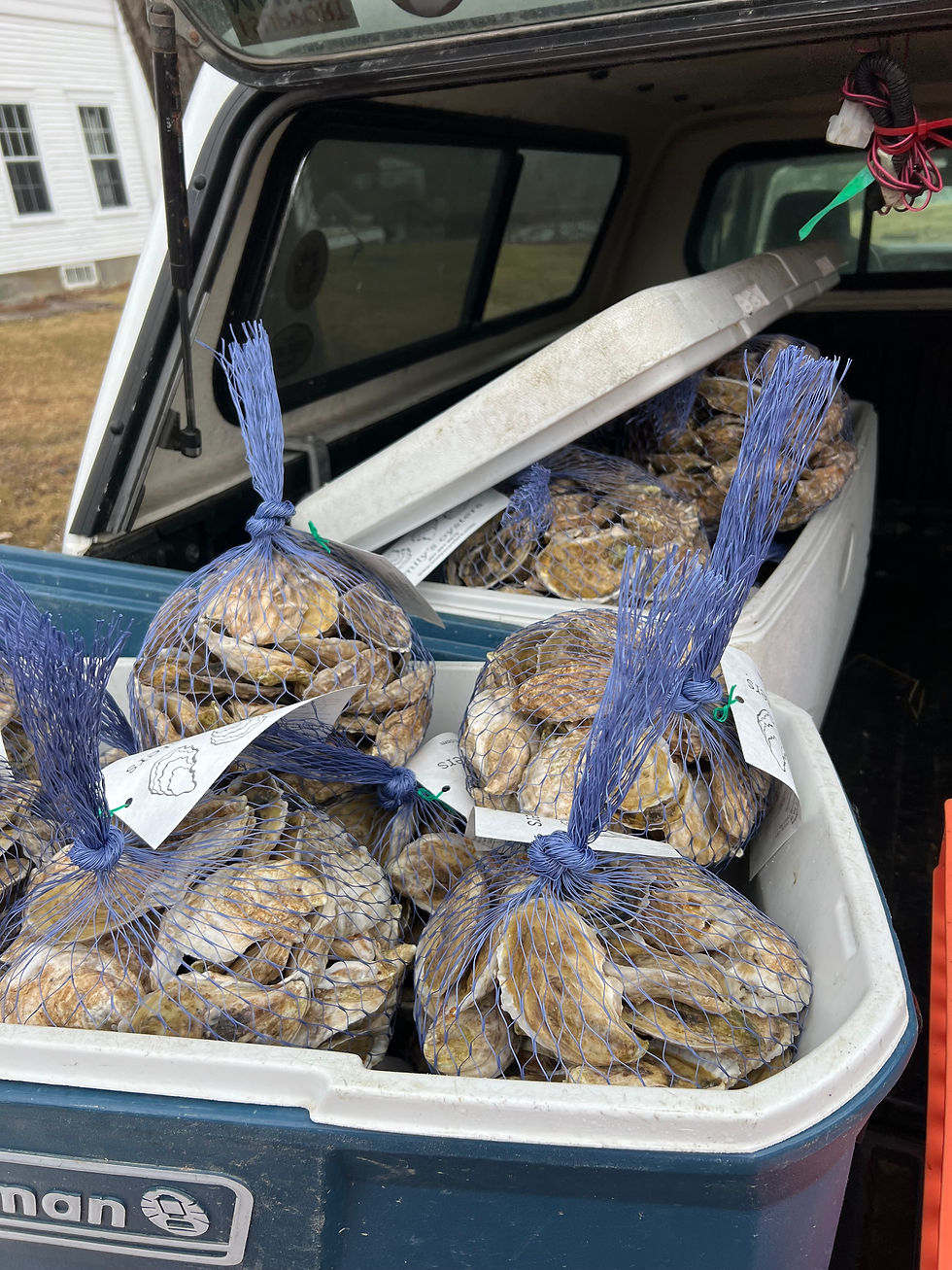- Emily Selinger

- Apr 12, 2024
Here we go! Despite the wind being less than cooperative, extra low new moon tides on this

second week of April meant it was time to rock and roll toward getting the 2024 oyster season up and running, and three long days later, the oysters are floating once more!
There's a little bit of hurry up and wait that happens when planning for this first season start. It really is so much easier with my current set up if I can time my oyster raising days with the lowest tides possible, and since I want to be sure that I'm ready to really go when those tide days come around, I tend to front load my gear prep for this first stage a little earlier than I need to.
First to go out are the bigger summer buoys with their fresh paint and reflective material to replace the slimy, smaller winter ones. Then I prep my long line rigging systems and spreader bars for my floating arrays,

which are reinstalled right before the first round of oysters come up (so they have somewhere to attach to once floating!) Then, one by one I haul my way by hand along each line of sunken gear, reattaching floats to each bag of oysters as it comes back into the boat and then hook it up to the fresh new floating rigging.
It's not a fast or easy process, but it's simple and works well enough for me and allows for me to check on things and see how they fared through the winter piece by piece. And so far so good! Looks like lots of happy oysters coming out of winter hibernation mode. Next up: many, many loads of clean, empty, mended gear to spread the oysters out into in preparation for warming waters and the first signs of growth.
.png)











